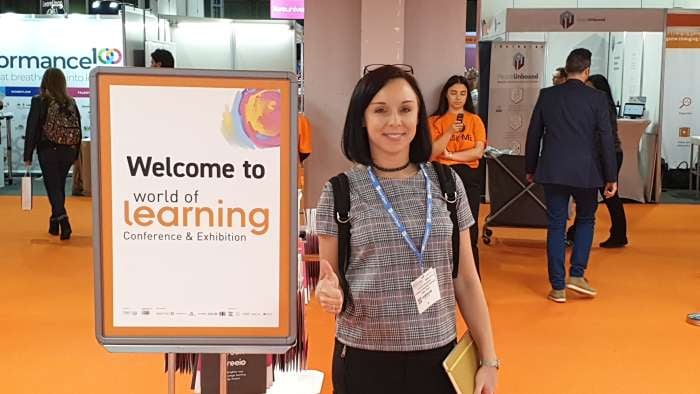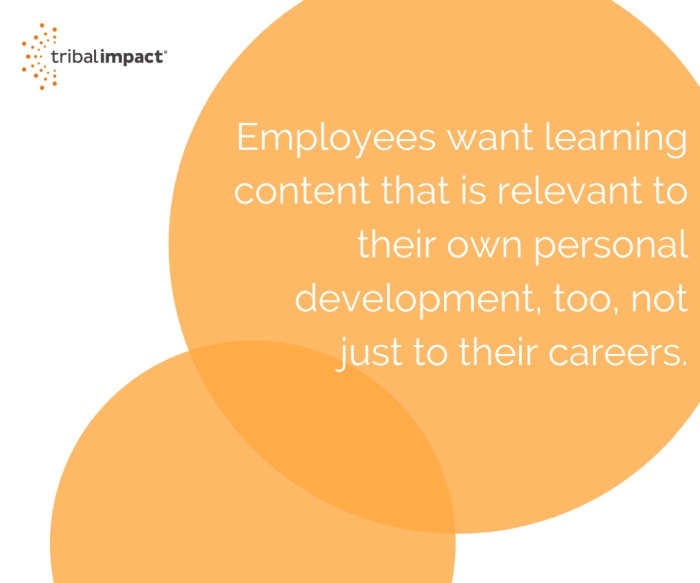What do Netflix and marketing have in common? Personalisation as well as psychological tricks. And #FOMO. All of those things that learning and development is currently missing. Lessons from the World of Learning Conference...
%20blog%20image%202.jpg?width=658&name=Why%20Social%20Media%20Policies%20Alone%20Arent%20Enough%20(And%20What%20Our%20eLearning%20Involves)%20blog%20image%202.jpg)
#FOMO.
It’s a hashtag usually preserved for describing the possibility of not being able to make a wild party.
Or perhaps the latest restaurant opening in town.
Or in my case, a top volleyball match.
It’s not a hashtag usually seen in LinkedIn comments about a Learning & Development (L&D) course someone is worried of not being able to attend.
And when you think of Netflix, you probably picture hours binge-watching the latest must-see series. You almost certainly don’t picture a productive day of learning where you impatiently press “watch next course” before the next one loads.
Yet, when I attended the World of Learning exhibition in Birmingham a few weeks ago, there was a common theme: Learning & Development (L&D) need to start using some of the tricks marketing and Netflix teams have been using for a long time, such as #FOMO, personalisation and data-driven decisions.
On top of this, L&D can also follow other marketing leads, such as positioning themselves as a profit-centre (not a cost-centre) to guide strategies.
So I thought I’d share the useful insights I learned from The World of Learning…

Apply The #FOMO Factor To Learning
People have a natural fear of missing out.
In fact, loss aversion studies suggest that the pain of losing something is twice as powerful psychological as the pleasure of gaining a thing.
This is something that marketing teams use to their advantage e.g. “25 people are looking at this hotel right now” and B2B “here is a testimonial from your competitor”.
L&D professionals should do the same, by promoting lots of examples of people who have adopted a new behaviour or learned something valuable and are now climbing the career ladder. Others will not want to miss out and decide to follow.
Marketers will always create a buzz too, so we should apply similar approach to promoting any new training materials or L&D program.
The L&D Of Netflix: Taking Personalisation To The Next Level
Nowadays, people are taking control of their own development. Alise New from Goodhabitz pointed to how their company’s survey showed that 90% of employees want to learn in the workplace. Some of the employees would even prefer to stay in a job that pays less but allows them to learn.
However, it needs to be the right content.
Employees want learning content that is relevant to their own personal development, too, not just to their careers. (This is backed by an Axonify study: 90% want personalised training that’s relevant to them.) They also want more choice yet more help to choose.
Learning Experience Platforms (LXPs) are the “new thing” in L&D - seen as the ‘The Netflix of Learning’.
They can use a questionnaire at the outset to determine a foundation for content and divide that content based on different users. L&D managers can then see who began a particular course/module, what content they consumed (and for how long), whether they stayed the course (quite literally) and how much time it took them to complete it.
Content through these platforms is personalised, bite-sized and can be accessed on-the-go such as on during commute or at the coffee shop. (The same Axonify survey showed 89% of learners want this.) LXPs also allows L&D to link modules based on quick quizzes, which supports their desire to follow their own learning path.
And just like marketing, LXPs enable L&D managers to target specific people or groups via workflows that help guide learners on their journey.

Use The Data To Optimise Results
Despite the fact that 75% of L&Ds claim that data is important in their work only 5% use it. (Unlike their marketing peers.)
Jo Keeler from Belbin mentioned during her presentation a Google’s Oxygen project, which used data to help the company make decisions on how to train their managers.
Here are the steps they took to use data effectively:
- Mapping where people are right now (using data from exit interviews, performance management and other documents.)
- Deciding where they need to be
- Designing the training content to take them there
- Measuring the results
- Redesigning the next training based on the results
A Seat At The Board: From Cost-Centre To Profit-Centre
Marketing teams have often been seen as “creatives” in B2B companies and sales teams often doubted their impact.
Now, they need to prove their worth and largely report on ROI not leads generated. Some marketing tools such as HubSpot even provide full end-to-end lead tracking.
A key theme throughout the presentations at The World of Learning was that L&D teams need to do the same.
L&D needs to:
- Move from measuring the return on experience from learners to measuring the ROI.
- Speak the language of senior executives to gain buy-in for initiatives. Understand what specific business capabilities are needed e.g. budget management, resource planning or sales generation?
-
Match that by moving from the traditional training model to learning focused on achieving business goals.
I, for one, am really excited by the changes happening in L&D and the possibilities that the technology developments bring. It’s a fascinating time to be an L&D professional right now and I can’t wait to help the Tribal Impact on this journey.
